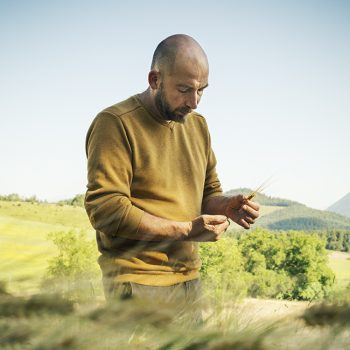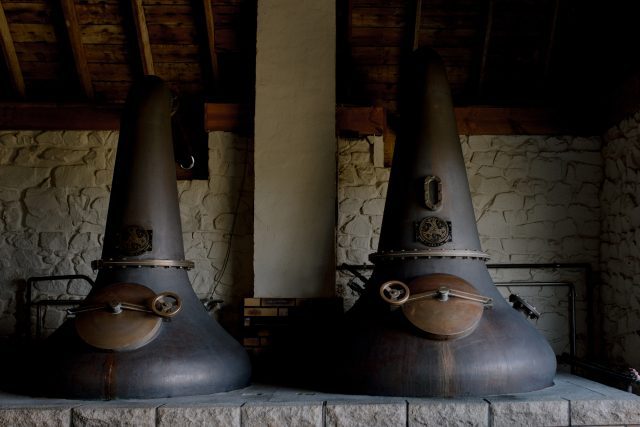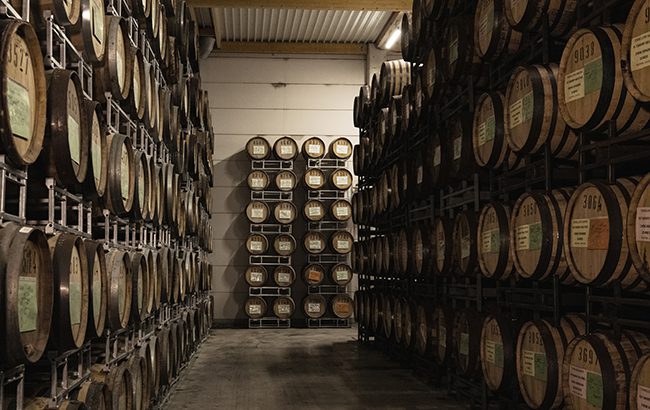French whisky: the category with ‘je ne sais quoi’
By Nicola CarruthersWith around 200 mainly artisanal producers, the French whisky industry has the potential to be a force for quality spirits.

*This feature was first published in the November issue of The Spirits Business magazine.
While France has long been celebrated for its wine, Cognac, and Armagnac, a new player is rising in the nation’s spirits scene – whisky. Just a few decades ago, French whisky production was limited to a handful of small distilleries. Today, the sector is booming, with hundreds of active producers, strong sales growth, and a geographical indication (GI) in development to formalise its identity.
According to the Fédération du Whisky de France, the country now counts around 200 whisky producers, though most are small‐ scale operations. Roughly 10 companies account for more than 80% of total output, signalling a maturing yet artisanal industry.
Citing Nielsen IQ data for France’s on‐trade, the federation notes that French whisky grew by 7.9% in volume last year, and soared by 20.3% in value. The category, while it remains small, is outperforming Scotch, Irish, American, Taiwanese, and Indian whisky, which all recorded volume and value declines in the French on‐trade last year. Besides French whisky, only Japanese whisky managed to post growth.

“French whisky is a very recent, very new category that’s growing very fast,” says David Roussier, who leads family‐run Distillerie Warenghem in Brittany, producer of the well‐ known Armorik whisky brand. “More people are actually willing to try some French whisky. The retailers have French whisky now, probably almost 20% of what they have in their small shops is French whisky. On the supermarket distribution for the moment, we’re less than 1% of the market, so it’s small, but it’s the fastest‐growing category in France right now.”
Matthieu Acar, retail manager and French whisky expert at retailer and distributor La Maison du Whisky, notes that while France is a huge market for whisky, it remains dominated by Scotch. He says French whisky produces only two million bottles per year, making up 1% of the country’s total whisky consumption. “We will go to four or six million bottles per year quite easily,” he adds, but he warns that in the next five years it will be “more difficult because French whisky is very artisanal – it’s not cheap whisky. We are not very good at making low‐priced whisky or blended whisky. We have to stay in the premium segment.”
To help the French whisky sector grow, Acar believes there is a need to educate French people on the category and its nuances. He explains that the industry often uses Cognac and local wine casks, as well as many types of raw materials such as rye, oats, and spelt.
Acar also highlights the abundance of French whisky producers that were on show at September’s Whisky Live Paris show, at the Grand Hall de La Vilette, which was organised by La Maison du Whisky. The show featured a dedicated French pavilion, showcasing local whisky makers such as Alfred Giraud, Armorik, Bellevoye, Brenne, Hautes Glaces, Heriose, and Laferté. “This is a major event because people can taste and understand whisky. We had 27 French distilleries, the dynamic was good, and people were trying French whisky, and starting to like it.”
Pricier end
Whisky sales in France are also dominated by the off‐trade, where the supermarket tends to lead the sector. Jean‐Sébastien Robicquet, founder of French spirits maker and distributor Maison Villevert, points out that while there are some high‐volume Scotch blends below €25 (US$29) such as William Peel and Label 5, most French whiskies tend to be at the pricier end of the scale.
He asks: “Is the question about transforming the French consumer or is the question about having enough stock to supply? You are caught between an immediate return on investment and the need to build the brands in the long run, the need to have a reputation, and the need to have real whisky aficionados who would go for 15‐, 18‐, 20‐year‐old.”
One early indicator that French whisky has the potential to boom is when an international drinks group makes a play in the category. One example is Rémy Cointreau’s 2017 purchase of Domaine des Hautes Glaces, an organic single malt whisky maker in the French Alps. Three years later, Maison Villevert acquired Celtic Whisky Company, based in Northern Brittany. Robicquet says the acquisition of Celtic Whisky Distillery was a “no‐brainer” because of the “wonderful people, superb scenery, state‐of‐the art distillery and very good product”.

An expert in making spirits, Maison Villevert produces G’Vine gin and La Quintinye vermouth, among other products. Robicquet had considered making whisky himself but in the end, he believes buying the distillery was the right move, combined with the brand team’s 20 years of experience and its ideal location in the north of the country.
Celtic Whisky Distillery has become known for its flagship single malt Glann Ar Mor, its peated whisky Kornog, and Gwalarn, a blend of ‘Celtic’ whiskies. The latter is said to combine the complexity of a Scotch whisky, the character of a German expression, and the peat of Kornog.
Frédéric Revol, founder of Hautes Glaces, says the French whisky industry has seen a lot of investment, including from other Cognac houses. “There are some that are making whisky, but were traditionally making Cognac,” he notes. However, he warns that Cognac is “not in a good shape”, and therefore “investment is slowing a little bit, but this is a question of confidence. So if tomorrow there is a GI, and the French category starts to emerge globally, then investment will come back for sure.”
Cognac remains the nation’s biggest‐selling French spirit, but 97.5% of the industry is consumed outside of its home market. The French whisky sector seems to be taking a different approach, focusing on its home territory first before targeting global markets.
For Distillerie Warenghem, the main focus has been the French market, particularly for the past two years. Roussier would like Armorik to maintain a leadership position in French whisky, adding: “We have to be present on the French market to remain in that position, and the export market has been quite difficult for everyone.”
Armorik makes several types of French single malt whiskies, including the Classic, which is a blend of Bourbon and Sherry cask‐ aged whiskies, and the Sherry Cask, which is matured exclusively in Sherry casks.

Focus on Europe
Armorik’s biggest international market is Germany, while China has been growing, but is “more difficult these days”, says Roussier. Europe is the main focus, including Poland, Belgium, the Netherlands, and the UK.
Revol believes there is a need to build the category internationally. Hautes Glaces exports to markets such as the UK, Japan, and the Nordics, Revol says, but the company is taking a cautious approach to its global expansion. “I’m sure there are a lot of countries and people that will be interested in Hautes Glaces. This is the beginning, and we are taking our time, step by step.” Revol says at this year’s Whisky Show in London, there was a lot of interest in terroir‐driven whiskies like Hautes Glaces.
Robicquet says the lack of stock is a challenge when it comes to exports. “If you don’t have the stock, it’s going to be difficult.” He cites the UK, Italy, and Japan as markets with opportunity for growth for French whisky.
Grain‐to‐glass producer Hautes Glaces takes a French wine approach to whisky making. Its portfolio includes rye‐based new‐make eau‐ de‐vie Vulson, and single malt Indigene, which both form part of the distillery’s permanent range. Limited edition offerings include Epistémè, which aims to reflect 15 years of alchemical and fertile exploration through the Hautes Glaces terroir.
A GI is also important for establishing a category, distinguishing what French whisky is, and protecting its qualities. A GI for French whisky has been in the works for a number of years, and is it hoped that it will be finalised by the end of 2026 at the earliest, according to the Fédération du Whisky de France. The GI will also incorporate the Alsace and Brittany GIs, which were established in 2015. The federation’s president, Christian Bec, says it has been a challenge to develop the GI and ensure that its members are happy with the proposal.
There are some discussions about the subcategories and how to name them within the GI proposal, Revol adds. Revol believes the GI will help France become “established as an active whisky nation on a global scale”, similar to the emergence of Japanese whisky. “The question of provenance and transparency are two good drivers for quality and emerging awareness,” he says.
No GI coherence
However, Robiquet is sceptical about the GI. “Today, there are so many players, so many styles. You’ve got one using barley, the other one using black wheat. Some are distilling on column stills, some are distilling with Cognac stills. How can you promote a GI if there is no real coherence? Unless it’s to protect players. What’s the difference between whisky distilled in Cognac, Alsace, or in Brittany, or even in Paris? It’s a little too premature, with some rules that need to be accepted by everybody and understood.”
France’s whisky industry, once a niche market, is now experiencing significant growth and recognition. With nearly 200 producers, rising domestic sales, and increasing international attention, French whisky is evolving into a respected category of its own. However, challenges remain, including limited production capacity, the need for greater consumer education, and debates surrounding a GI.
Despite these hurdles, France is positioning itself as an emerging whisky nation – one that mirrors the success stories of Japanese whisky, and reflects the country’s deep commitment to quality, innovation, and terroir.
Related news
Hautes Glaces brings ‘French fine wine’ approach to whisky
